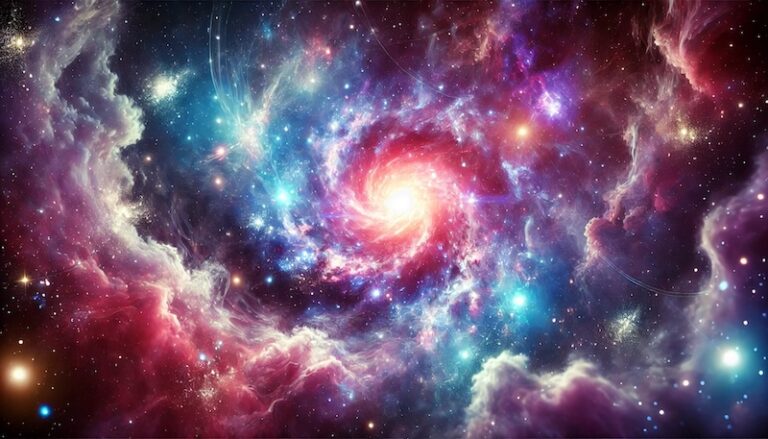Origins of French Music
French music has a rich and diverse history that dates back to ancient times. The origins of French music can be traced back to the Gaulish and Roman times when music played an important role in religious ceremonies, festivals, and theatrical performances. Gaulish music was primarily vocal, with a focus on chants and songs that were often accompanied by simple instruments like flutes and drums.
During the medieval period, French music underwent a significant transformation. The influence of Gregorian chant and the development of polyphony had a profound impact on French musical traditions. The monophonic chants of the early medieval period eventually evolved into more complex polyphonic compositions with multiple melodic lines. The Notre Dame School, led by composers such as Leonin and Perotin, played a pivotal role in the development of polyphony in France.
The Renaissance period saw a flourishing of musical creativity in France. French composers such as Guillaume Dufay and Josquin des Prez embraced the polyphonic style of the time, incorporating intricate harmonies and counterpoint into their compositions. The rise of the printing press allowed for the dissemination of music across Europe, leading to increased cultural exchange and the development of a distinct French musical identity.
The Baroque era marked a shift towards more ornate and virtuosic styles of music. French composers such as Jean-Baptiste Lully and Jean-Philippe Rameau were at the forefront of this musical revolution. Lully, in particular, played a significant role in the development of French opera, blending music, dance, and drama into a cohesive art form. Rameau, on the other hand, was known for his innovative harmonic language and complex musical structures.
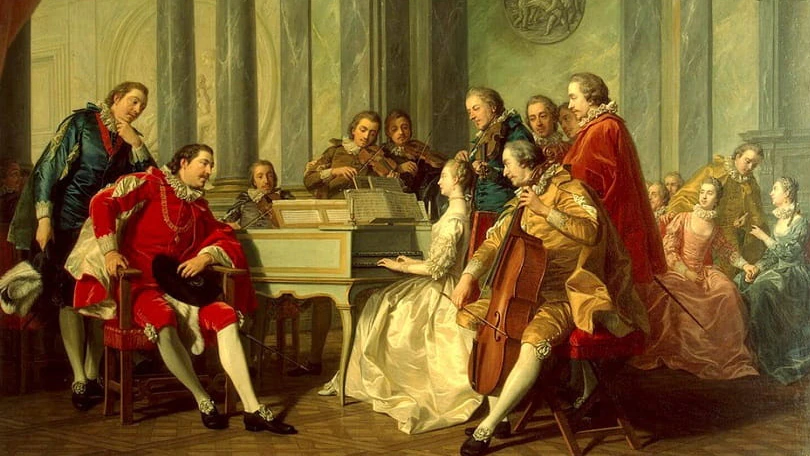
The Classical era brought a return to simplicity and clarity in French music. Composers such as Jean-Baptiste Lully and François Couperin embraced the ideals of the Enlightenment, favoring balanced melodies, clear forms, and emotional restraint. The rise of the symphony and the concerto also had a profound impact on French music, with composers like Joseph Haydn and Wolfgang Mozart influencing French composers of the time.
The Romantic era and Impressionism in French music represented a departure from the classical traditions. Composers such as Hector Berlioz and Claude Debussy embraced a more expressive and atmospheric style of music, exploring new harmonies, tonal colors, and forms. Berlioz’s Symphonie fantastique and Debussy’s Prelude to the Afternoon of a Faun are considered groundbreaking works that pushed the boundaries of traditional musical conventions.

The 19th and 20th centuries witnessed a rise in French nationalism in music. Composers like Gabriel Fauré and Camille Saint-Saëns sought to capture the essence of French culture and identity in their compositions. The influence of folk music, regional traditions, and historical events played a significant role in shaping the works of these composers.
French music in the 20th century saw an explosion of creativity and experimentation. Composers such as Maurice Ravel and Olivier Messiaen embraced new musical techniques and explored innovative forms and structures. The avant-garde movements of the time, such as serialism and musique concrète, also found a place in French musical circles.
Today, French music continues to evolve and thrive, drawing inspiration from both its rich historical legacy and contemporary musical trends. From classical compositions to popular genres like chanson and French hip-hop, the history of French music is a testament to the enduring power of creativity and artistic expression.
The Medieval and Renaissance Periods of French Music
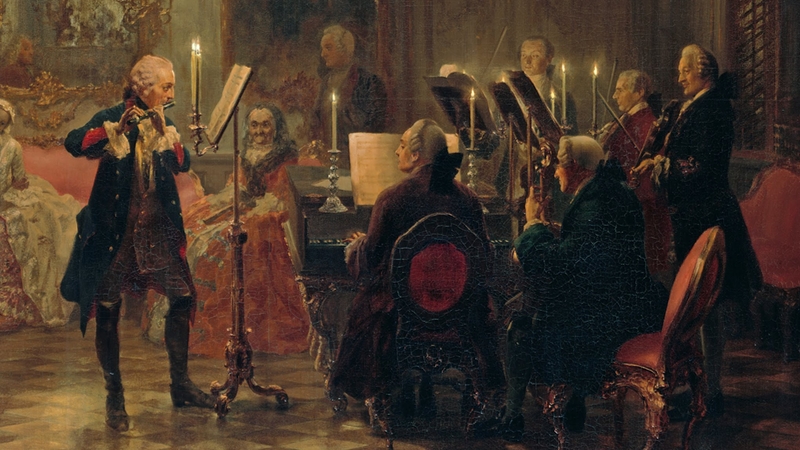
The medieval and Renaissance periods played a significant role in shaping the history of French music. During the medieval period, French music was strongly influenced by the Gregorian chant, which was the dominant form of liturgical music at that time. This monophonic vocal music was characterized by its solemn and melismatic style, often performed in Latin.
One of the notable developments during this period was the rise of troubadours and trouveres. These poet-musicians composed and performed secular music in the vernacular language, primarily in Old French. Their songs revolved around themes of love, chivalry, and courtly romance. The troubadour tradition flourished in the south of France, while the trouvere tradition emerged in the north.
As the Renaissance period dawned in the 15th century, French music underwent a significant transformation. The influence of the Franco-Flemish school, known for its polyphonic style, became prominent. The Burgundian court, with composers like Guillaume Dufay and Gilles Binchois, played a pivotal role in disseminating this musical style.
During the Renaissance, the chanson emerged as one of the most essential vocal forms in French music. Composers such as Josquin des Prez and Clément Janequin excelled at creating expressive and harmonically rich chansons. These polyphonic songs, often accompanied by instruments, were performed both in courtly and bourgeois settings.
French music during the Renaissance also saw the development of dance music. The pavane and galliard, in particular, gained popularity as instrumental genres. French composers such as Thoinot Arbeau further codified the art of dance through his influential treatise, Orchesography.
Furthermore, the emergence of printing technology in the Renaissance period led to the dissemination of musical compositions on a broader scale. Music printing houses, such as those established by Pierre Attaingnant, published an extensive repertoire of chansons and instrumental works. This enabled a wider audience to access and appreciate French music.
The medieval and Renaissance periods of French music were marked by the influence of Gregorian chant, the rise of troubadours and trouveres, the prominence of the Franco-Flemish school, the development of the chanson, the flourishing of dance music, and the advent of music printing. These historical developments laid the foundation for future eras and paved the way for the rich musical heritage that defines French music.
Baroque and Classical Era of French Music
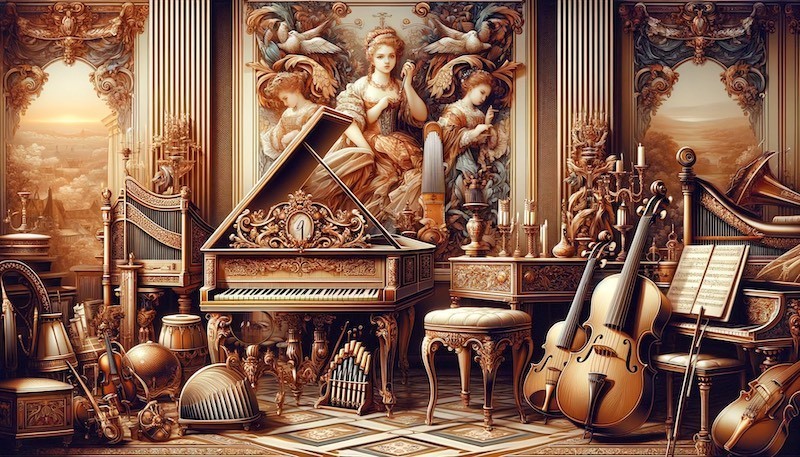
The Baroque and Classical eras of French music marked a significant shift in the country’s musical landscape. During this time, French composers made notable contributions to the development of Western classical music, establishing a distinct French style that would influence composers for centuries to come.
One of the key figures of the Baroque period in French music was Jean-Baptiste Lully. Born in Italy but later becoming a naturalized French citizen, Lully was renowned for his work as a composer and court musician under the patronage of King Louis XIV. He played a crucial role in popularizing the French overture and ballet, blending traditional French dances with the grandeur of the Opera. Lully’s compositions, such as his famous opera “Armide,” exemplify the ornate and elaborate style of Baroque music.
As the Classical era emerged in the late 18th century, French composers continued to shape the course of Western music. François Joseph Gossec, an influential composer of this period, embraced the ideals of the Classical style while incorporating elements of French music. Gossec’s works showcased a refined and elegant melodic style, characterized by clarity and balance. His Symphony in D Major became highly regarded for its symphonic innovations and marked a transition towards the symphonic form that would dominate the Classical period.
Another prominent figure in French music during the Classical era was André Grétry. Grétry’s compositions, including his operas and ballets, demonstrated a keen sense of melody and lyricism. His natural gift for storytelling through music was evident in his opera “Richard Coeur-de-Lion,” which became one of the most successful French operas of its time. Grétry’s works highlighted the seamless blend of both vocal and instrumental elements, showcasing the refinement and grace characteristic of French music.
The Baroque and Classical eras in French music were also marked by the flourishing of chamber music and the rise of the French string quartet tradition. Composers such as Joseph Haydn, influenced by the French style, incorporated its elegance and sophistication into their own compositions.
The Baroque and Classical eras of French music were defined by the distinctive contributions of French composers to the world of classical music. Their innovative musical styles and compositions continue to be celebrated and studied, shaping the trajectory of Western music as a whole.
The Romantic Era and Impressionism in French Music
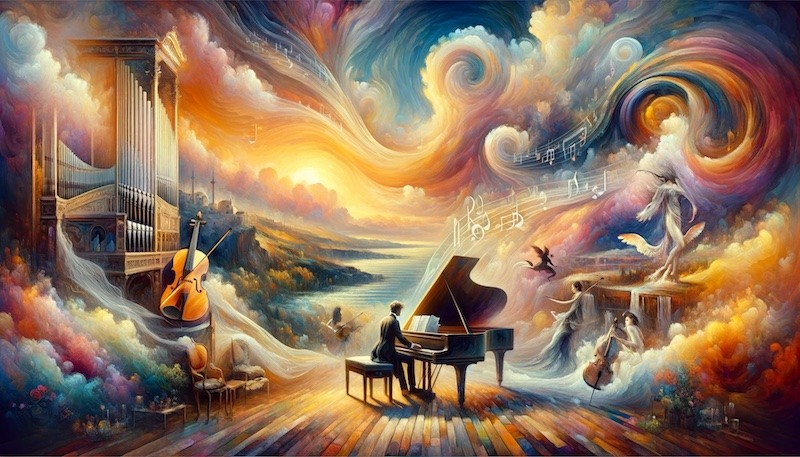
The Romantic Era, which spanned from the early 19th century to the early 20th century, was a period of great artistic and cultural change. In France, this era was marked by the rise of Romanticism in music, which sought to evoke deep emotions and explore individual expression. French composers of this period, such as Hector Berlioz, Camille Saint-Saëns, and Gabriel Fauré, played a vital role in shaping the development of French music.
One significant aspect of the Romantic Era in French music was the exploration of new forms and genres. Composers experimented with expanded forms, giving rise to larger orchestras and longer compositions. One notable example of this is Berlioz’s “Symphonie Fantastique,” a groundbreaking work that tells a narrative through its five movements. This symphony introduced innovative orchestral techniques and expanded the expressive possibilities of the orchestra.
Another important development during this period was the influence of Impressionism on French music. Impressionism, a movement originating in visual arts, found its way into music through composers such as Claude Debussy and Maurice Ravel. These composers sought to depict sensory and emotional experiences through their compositions, often using unconventional harmonies, rich textures, and colorful orchestration.
Debussy, in particular, is renowned for his ability to create evocative and atmospheric soundscapes. His composition “Prelude to the Afternoon of a Faun” is a prime example of this approach, with its dreamlike quality and shimmering orchestration. Ravel, on the other hand, is known for his meticulous attention to detail and his ability to blend different musical styles. His orchestral work, “Boléro,” is a masterpiece of gradual build-up and rhythmic intensity.
The Romantic Era and Impressionism also brought about a heightened interest in national identity in French music. Composers began incorporating folk songs and traditional melodies into their works, aiming to capture the essence of French culture. This emphasis on national identity can be observed in Fauré’s “Pavane,” a piece that draws inspiration from France’s rich musical heritage.
The Romantic Era and Impressionism had a profound impact on French music. These movements expanded the expressive possibilities of music, challenged traditional forms, and brought a sense of nationalism to the forefront. French composers of this period left a lasting legacy, and their works continue to be celebrated and performed to this day. The Romantic Era and Impressionism in French music represent a vibrant and transformative period in the history of music.
French Nationalism in Music
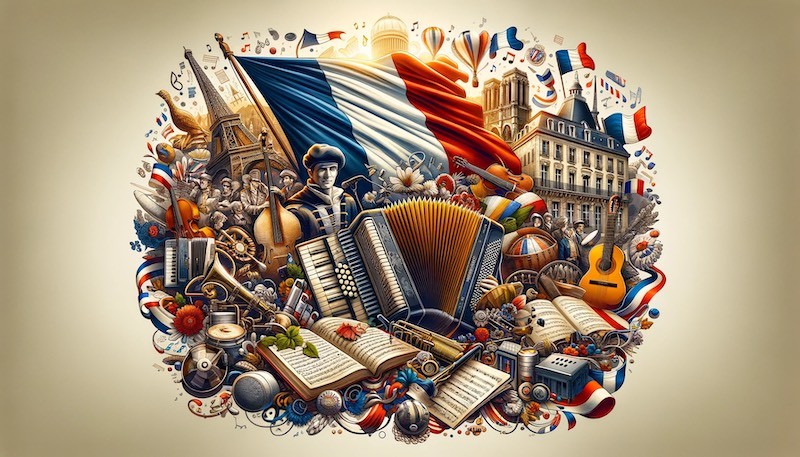
French nationalism in music refers to a movement that emerged during the 19th and early 20th centuries, where French composers sought to express their cultural identity and patriotism through their works. This period was characterized by a strong sense of national pride and a desire to distinguish French music from its European counterparts.
One of the key figures in the development of French nationalism in music was Hector Berlioz. His compositions, such as the “Symphonie Fantastique,” were infused with elements of French folk music and historical themes. Berlioz believed that music should reflect the spirit of the nation and evoke a sense of national pride among listeners.
Another prominent composer associated with French nationalism in music was César Franck. His compositions, such as the “Symphony in D minor,” incorporated elements of Gregorian chant and medieval French music. Franck’s use of these distinctly French musical influences helped to establish a unique musical language that was distinctly French.
During this period, French composers also turned to historical events and figures as sources of inspiration. For example, Camille Saint-Saëns’ “La Princesse Jaune” drew upon a popular Japanese-themed play, reflecting the French fascination with exoticism and orientalism at the time. Similarly, Claude Debussy’s “La Mer” was influenced by the sea and the landscapes of his native France.
The French nationalist movement in music reached its peak during the late 19th and early 20th centuries with the emergence of the impressionist movement. Composers such as Debussy and Maurice Ravel embraced this style, seeking to capture fleeting emotions and impressions through their music. The use of innovative harmonies, colorful orchestration, and evocative melodies became hallmarks of the impressionist style, which further solidified the French identity in music.
The influence of French nationalism in music extended beyond the realm of composition. It also influenced the establishment of music institutions and the promotion of French music abroad. The founding of the Paris Conservatory in 1795 provided a platform for the training and nurturing of French musicians, ensuring the continuation of the French musical tradition.
French nationalism in music played a significant role in shaping the country’s musical identity. Composers like Berlioz, Franck, Debussy, and Ravel sought to create a distinctly French musical language that reflected their cultural heritage and expressed their national pride. Their contributions to the development of French music continue to influence and inspire composers to this day.
French Music in the 20th Century: A Legacy of Innovation and Creativity
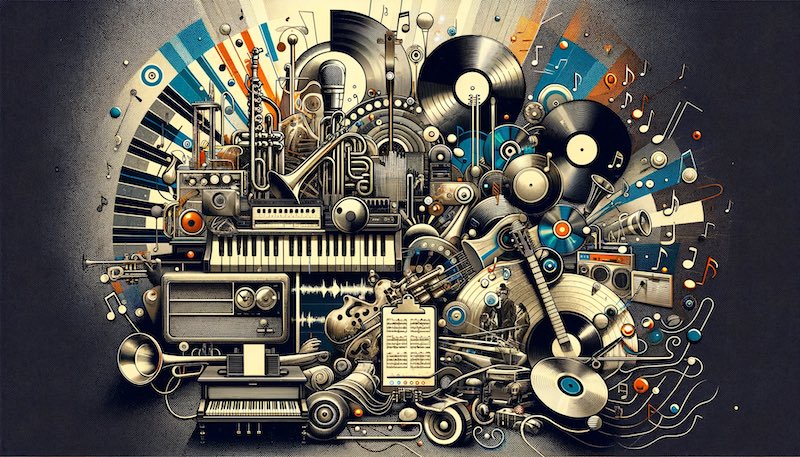
French music in the 20th century witnessed a remarkable evolution, reflecting the changing cultural, social, and political landscape of the time. This period was marked by a diversity of musical styles and genres, as composers embraced new forms of expression and experimented with innovative techniques. The prominent French composers of the 20th century made significant contributions to the global music scene, leaving behind a lasting legacy of innovation and creativity.
The early 20th century saw the emergence of composers such as Maurice Ravel and Claude Debussy, who were pioneers of the Impressionist movement in music. Inspired by the Impressionist painters, these composers sought to capture fleeting impressions and create atmospheric and evocative musical landscapes. Debussy’s iconic compositions like “Clair de Lune” and “Prelude to the Afternoon of a Faun” exemplify this aesthetic, with their delicate harmonies, colorful orchestration, and ethereal melodies.
As the century progressed, French music underwent further transformations, responding to the tumultuous events of the time. The post-World War I period witnessed a shift towards neoclassicism, with composers like Francis Poulenc and Darius Milhaud embracing a more restrained and formal musical language. Poulenc’s compositions such as “Gloria” and “Les Biches” showcase his mastery of combining classical forms with a distinctively French sensibility.
In the mid-20th century, French music experienced a surge of innovation and experimentation, particularly with the advent of musique concrète and electronic music. Composers like Pierre Schaeffer and Pierre Boulez explored the potential of recorded sounds and electronic instruments, pushing the boundaries of traditional musical composition. Boulez’s composition “Le Marteau sans Maître” is a seminal work in this genre, incorporating unconventional sounds and complex rhythms.
The 20th century also witnessed the rise of minimalism and spectralism in French music. Composers like Olivier Messiaen and Gérard Grisey explored new sonic territories by focusing on extended techniques, microtonality, and innovative approaches to orchestration. Messiaen’s masterwork “Quartet for the End of Time” captivates audiences with its transcendent spirituality and harmonic richness.
Throughout the late 20th century and into the present day, French music has continued to evolve and diversify, embracing influences from jazz, world music, and popular culture. Contemporary composers like Bruno Mantovani and Kaija Saariaho have achieved international recognition for their bold and distinctive musical voices. Mantovani’s composition “Le Sette Chiese” juxtaposes traditional orchestral forces with electronic sounds, creating a kaleidoscopic sonic tapestry.
French music in the 20th century reflects a rich tapestry of musical expression, characterized by innovation, diversity, and a spirit of exploration. From the impressionist works of Debussy and Ravel to the avant-garde experiments of Boulez and Schaeffer, French composers have continually pushed the boundaries of musical convention. The legacy of these composers, both past and present, ensures that the vibrant tradition of French music will continue to captivate and inspire audiences around the world. French music in the 20th century is a testament to the country’s enduring cultural and artistic legacy.
Contemporary Trends in French Music

In recent times, French music has continued to evolve and embrace new trends, fusing traditional elements with modern influences. The diversity of contemporary French music reflects the multicultural society of France, with artists incorporating various genres and styles to create unique and innovative sounds. From pop and rock to electronic and hip-hop, there is a wide range of musical expressions that cater to different tastes and preferences.
One prominent trend in contemporary French music is the resurgence of traditional folk music. Artists are rediscovering and reinventing traditional French songs and melodies, infusing them with modern arrangements and instrumentation. This revival of folk music not only connects with the cultural heritage but also appeals to a growing audience interested in rediscovering the roots of French music.
Another significant trend is the rise of electronic and experimental music in France. French artists have been at the forefront of the electronic music scene, pushing boundaries and exploring new sonic landscapes. This genre has gained international recognition, with French electronic music acts headlining major festivals and influencing electronic music worldwide.
French hip-hop has also seen tremendous growth over the years. Artists like MC Solaar, IAM, and NTM have achieved mainstream success while incorporating elements of French language and culture into their lyrics. French hip-hop offers a unique perspective on social and political issues, giving a voice to marginalized communities and reflecting the realities of contemporary France.
Additionally, French pop music continues to thrive with artists such as Stromae, Indila, and Christine and the Queens gaining worldwide popularity. This genre blends catchy melodies with introspective lyrics, often addressing personal and emotional themes. French pop music has the ability to resonate with a global audience due to its universal themes and relatable storytelling.
Furthermore, France is known for its vibrant and diverse music festivals. The country hosts numerous music festivals throughout the year, ranging from large-scale events like Rock en Seine and Les Eurockéennes to more niche festivals dedicated to specific genres or themes. These festivals provide a platform for emerging artists, allowing them to showcase their talent and connect with a broader audience.
Contemporary French music is a reflection of the country’s rich musical heritage, embracing both traditional and modern influences. The fusion of different genres and styles has resulted in a diverse and vibrant music scene that continues to evolve. From folk to electronic, hip-hop to pop, there is something for everyone in the world of French music.
Conclusion
In this article, we have explored the rich and vibrant history of French music, spanning across centuries and encompassing various periods and styles. From its origins in medieval times to the contemporary trends of the 21st century, French music has evolved and contributed significantly to the global music scene.
The origins of French music can be traced back to the early medieval period when Gregorian chants and troubadour songs were the predominant forms. These early forms laid the foundation for the development of music in France and influenced subsequent musical styles.
During the medieval and Renaissance periods, French music flourished with the emergence of polyphonic and choral music. Composers such as Guillaume de Machaut and Josquin des Prez made significant contributions to the development of music during this time, with their complex harmonies and intricate compositions.
The Baroque and Classical eras saw the rise of French composers like Jean-Baptiste Lully and Jean-Philippe Rameau, who played key roles in shaping French music. Their works, characterized by elaborate orchestration and refined melodies, brought French music to the forefront of European music during this period.
The Romantic era witnessed a shift in French music, with composers like Hector Berlioz and Claude Debussy embracing the ideals of musical expression and freedom of form. Impressionism also had a profound influence on French music during this time, with Debussy’s innovative compositions reflecting the artistic movement’s emphasis on color and atmosphere.
French nationalism in music became a prominent aspect during the late 19th and early 20th centuries, with composers like Camille Saint-Saëns and César Franck incorporating nationalistic elements into their works. The desire to express French identity and capture the essence of French culture became a driving force in their compositions.
French music in the 20th century witnessed a remarkable diversity of styles and genres. From the experimental and avant-garde compositions of Olivier Messiaen to the minimalist influences of Pierre Boulez, French composers continued to push the boundaries of musical expression. The emergence of popular music genres such as chanson and French rock further enriched the musical landscape of France.
In contemporary times, French music continues to evolve and embrace various genres and styles. Artists like Daft Punk, Édith Piaf, and Christine and the Queens have achieved international acclaim, showcasing the diversity and innovation within the French music scene.
The history of French music is a testament to its enduring legacy and influence. From its medieval origins to the contemporary trends of today, French music has paved the way for innovation, creativity, and cultural expression. As we continue to delve into the rich tapestry of French music, we can appreciate its unique contributions to the world of music and its ongoing impact on the global stage.
Embarking on a Journey Through French Music’s Rich History
French music’s tapestry weaves a story of evolution and cultural depth, extending back hundreds of years. Starting in the medieval era, music transcended art, becoming a spiritual force within ancient church walls. Gregorian chants set the early tone with their solemn, mesmerizing beauty.
The Renaissance ushered in a transformative era for French music, epitomized by the chanson’s lyrical beauty in France’s opulent courts. Composers like Guillaume de Machaut and Josquin des Prez introduced complex polyphony, enriching France’s musical heritage.
The Baroque period saw French music adopt Italian and German influences, with Jean-Baptiste Lully’s operas epitomizing this era’s grandeur. The Romantic era, led by Debussy, Ravel, and Fauré, revolutionized music with emotional depth and novel compositions, as seen in Debussy’s evocative “Clair de Lune.”
The 20th century witnessed French music’s diversification into jazz, with Django Reinhardt, and the soulful French chanson, marked by Edith Piaf and Charles Aznavour. Today, French music, spanning from Daft Punk’s electronic beats to Stromae’s unique compositions, continues to evolve and captivate audiences worldwide.
This journey from medieval chants to modern melodies showcases French music’s enduring legacy and its constant innovation, contributing significantly to the global music scene.
Exploring the Diversity of Traditional French Music
Wandering through the cobblestone streets of France immerses you in melodies that reflect its rich musical heritage. French music is a vibrant expression of its people and history, spanning from moving classical ballads to lively folk tunes.
The chanson, more than just a song, is the heart of French music. Rooted in the Middle Ages and thriving during the Renaissance, these narrative works are time capsules of love, longing, and life, woven with poetic lyrics and captivating melodies.

In the 19th-century Parisian cafés, the musette genre, with its distinctive accordion chords, embodies the charm and nostalgia of Paris. It brings to life the laughter, clinking glasses, and dancing at community gatherings, serving as a festive soundtrack to social connections.
Venturing into the rural landscapes, you’ll find musique traditionnelle or French folk music, narrating the diverse regional cultures of France. Instruments like the hurdy-gurdy, bagpipes, and fiddle tell stories, reflecting the lives and traditions of the locals.
The domain of French classical music, led by icons like Claude Debussy and Maurice Ravel, paints musical canvases with innovative harmonies and textures. These impressionist compositions, timeless in their appeal, continue to inspire with their depth and beauty.
Lastly, the grandeur of French opera, with masterpieces like Georges Bizet’s “Carmen”, offers a fusion of music, drama, and visual artistry. Its emotional depth and scale enchant audiences, showcasing the diverse spectrum of French music.
This journey through traditional French music genres reveals a mosaic of sounds and stories, each distinct yet harmoniously contributing to France’s cultural legacy.
Highlighting France’s Musical Icons: From Debussy to Daft Punk
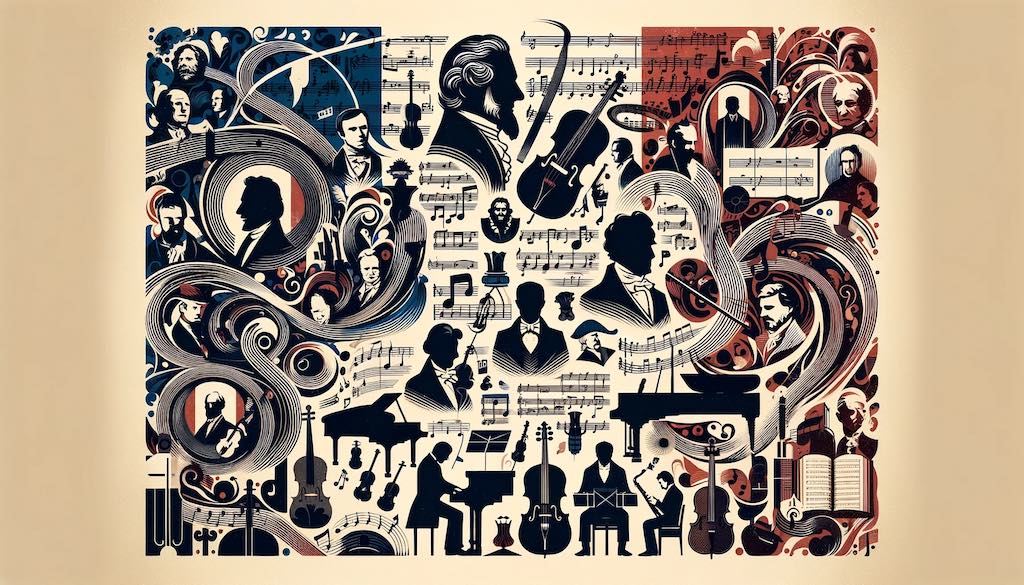
France’s musical heritage, rich and diverse, has given the world a plethora of talented musicians and composers. This journey from classical maestros to pop sensations illustrates the country’s significant contribution to global music.
Claude Debussy, a pillar of French music, pioneered Impressionist tunes. His works, notably “Clair de Lune” and “Prelude to the Afternoon of a Faun,” are celebrated for their dreamlike melodies and innovative harmonics, captivating audiences worldwide.
Maurice Ravel, a contemporary of Debussy, significantly influenced Impressionist and Symbolist music. Famous pieces like “Boléro” and “Daphnis et Chloé” display his orchestral brilliance and vibrant soundscapes.
Edith Piaf, known as “The Little Sparrow,” is an emblematic figure in contemporary French music. Her powerful, emotive voice in classics like “La Vie en Rose” has made her songs cultural anthems with enduring appeal.
In the pop realm, Serge Gainsbourg and Jacques Brel left distinct marks. Gainsbourg, with his provocative lyrics in “Je t’aime… moi non plus,” and Brel, through emotional narratives in “Ne me quitte pas,” have become cultural icons.
Today’s French music scene continues this legacy. Artists like Stromae, Christine and the Queens, and Daft Punk blend traditional chanson with modern genres, gaining international acclaim for their innovative sounds.
Famous French Musicians and Composers: Trailblazers in Global Music
France’s music history is a tapestry of diverse genres and eras, marked by the contributions of talented musicians and composers. These artists have not only shaped French music but also globally expanded the boundaries of the musical art form.
Claude Debussy, born in 1862, stands out as a revolutionary figure in classical music. As a pioneer of Impressionist music, his works like “Clair de Lune” and “Prelude to the Afternoon of a Faun” are emblematic of his skill in evoking emotions musically.
Maurice Ravel, another influential composer, is celebrated for his complex harmonies and innovative orchestration, as seen in works like “Boléro” and “Pavane for a Dead Princess.” He remains a pivotal figure in 20th-century music.
The French music scene has also given rise to iconic performers like Edith Piaf, known as “The Little Sparrow.” Her emotive singing, with themes of love and resilience, has left a timeless imprint on music.
Contemporary French music is marked by groundbreaking artists like Daft Punk, whose electronic beats and futuristic soundscapes, especially in the album “Discovery,” have positioned them as electronic music trailblazers. Indie pop band Phoenix, with hits like “1901” and “Lisztomania,” bridges French and international music scenes with their catchy tunes and vibrant energy.
Today, the French music landscape continues to evolve, showcasing diverse talents like the soulful Camille and the dynamic rap group IAM.
In summary, from classical maestros like Debussy and Ravel to modern influencers like Daft Punk and Phoenix, French musicians and composers have significantly impacted the global music scene. Their legacy, ranging from Edith Piaf’s timeless charm to the experimental soundscapes of newer artists, continues to resonate and inspire audiences worldwide.
French Music’s Global Impact: A Melodic Journey Beyond Borders
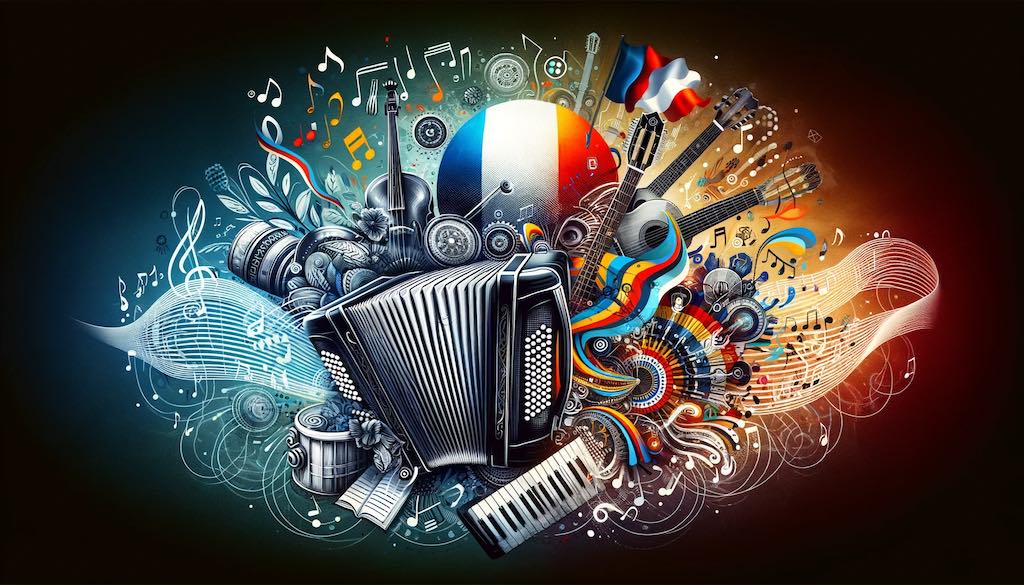
French music, with its rich history and diverse genres, holds a prestigious place in the global music scene. Its ability to captivate audiences worldwide and inspire musicians from various corners of the globe is a testament to its lasting influence.
The realm of classical music has been profoundly shaped by French composers like Claude Debussy, Maurice Ravel, and Camille Saint-Saëns. Their timeless pieces are cornerstones of the classical repertoire, inspiring musicians and being performed by orchestras around the globe.
In the genre of French chanson, the heartfelt lyrics and soulful melodies have significantly influenced the global music scene. This style, exemplified by artists like Jacques Brel and Édith Piaf, laid the groundwork for the modern singer-songwriter movement, resonating across cultures and languages.
Beyond classical and chanson, French music’s influence extends to electronic and pop genres. Artists such as Daft Punk and Justice have garnered international acclaim in the electronic music scene with their infectious beats and innovative production. Likewise, pop artists like Serge Gainsbourg, France Gall, and Charles Aznavour have achieved global popularity, blending French lyrics with catchy melodies and inspiring a wave of multilingual musical experimentation.
Additionally, French music festivals and cultural events like Francofolies de la Rochelle and Trans Musicales de Rennes have become hubs for artistic exchange and collaboration. These events are not only celebrations of music but also fertile grounds for showcasing emerging talent and contributing to the cross-pollination of musical ideas.
The creativity, diversity, and innovation in French music continue to be a source of inspiration for musicians worldwide. From the soul-stirring melodies of chanson to the groundbreaking beats of electronic music, French music’s legacy is felt across various genres. As the French music scene evolves and embraces new trends, it stands as a dynamic and influential force in shaping the global musical landscape.
Exploring the Diverse Musical Landscape of France
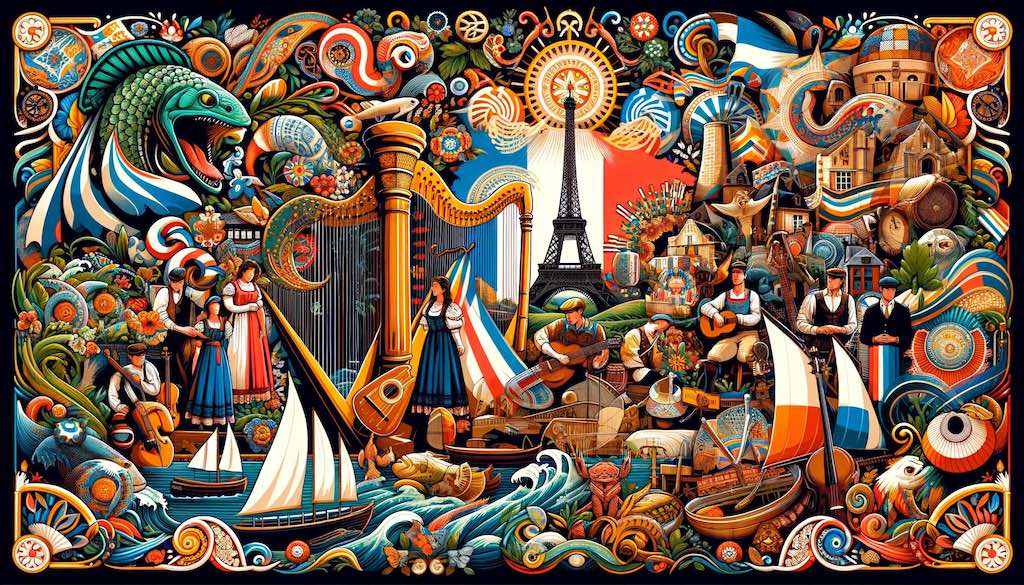
French music, often epitomized by romantic Parisian melodies and accordion tunes, transcends these stereotypes, revealing a rich and varied musical heritage unique to each region.
In Brittany and Normandy, Celtic influences reign supreme. Traditional folk music here features bagpipes, Celtic harps, and rhythmic foot-stomping, celebrated at events like the Festival Interceltique de Lorient, a global hub for Celtic music enthusiasts.
The Alsace region, nestled between Germany and France, presents a fascinating blend of these two cultures in its music. Instruments like accordions, fiddles, and zithers play a pivotal role in local dances and festivals, including the vibrant Sundgau Festival, reflecting the region’s complex cultural history.
Heading south to Provence and Languedoc, one encounters the lively Mediterranean sounds. This area’s music, a fusion of French, Italian, and North African influences, utilizes instruments like tambourines, castanets, and guitars, producing melodies that are an integral part of the local cultural identity.
In the western Vendée region, folk music is vibrant and distinct. The accordion, alongside the hurdy-gurdy and violin, forms the backbone of their musical traditions. Festivals like the Bal des Bouilles and the Festival Aux Heures d’Eté showcase the unique music and dance of this area.
The French Alps and Pyrenees offer a glimpse into traditional mountain music. Instruments like the hurdy-gurdy, bagpipes, and fifes and drums create a celebratory atmosphere, seen in festivals like the Transhumances in the Alps and the Bénédiction des Estives in the Pyrenees.
These regional musical variations across France demonstrate the country’s rich and diverse cultural tapestry. Beyond the iconic Parisian sounds, exploring France’s regional music uncovers a fascinating array of sounds, influences, and traditions, each telling a unique story of the French musical landscape. From the Celtic tunes of Brittany to the Mediterranean rhythms of Provence, French music beautifully mirrors the diverse cultural mosaic of France.
Celebrating French Music: A Tapestry of Festivals and Cultural Events
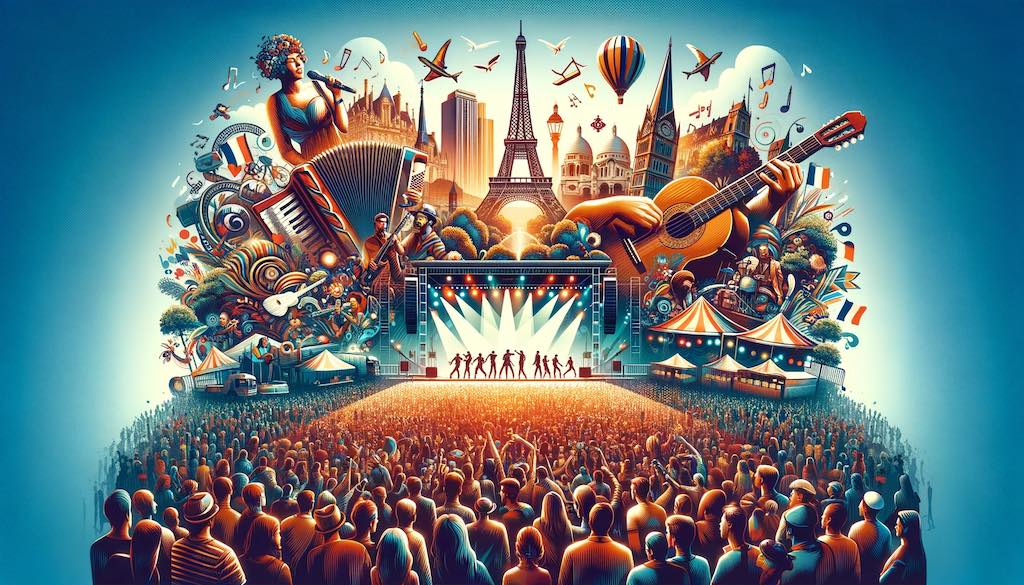
French music festivals and cultural events are celebrated worldwide, representing the vibrant heart of France’s musical heritage. These events are more than just showcases of musical diversity; they are melting pots of global cultures, fostering unique opportunities for cultural exchange and artistic collaboration.
The Essence of French Music Festivals
Historical Significance: Rooted in royal and religious ceremonies, French music festivals have evolved over centuries, merging historical traditions with contemporary celebrations.
Diversity of Genres: These festivals offer a kaleidoscope of musical styles, from classical symphonies and romantic operas to modern jazz, electronic, and indie pop, reflecting the rich and varied tapestry of French music.
Major French Music Festivals
Festival de Cannes: Known primarily for film, Cannes also features diverse music performances, reflecting the elegance of French culture.
La Fête de la Musique: Held on June 21st each year, this festival transforms French streets into stages, celebrating music in all its forms.
Montreux Jazz Festival: Although not exclusively French, it has deep connections to French jazz and showcases some of the genre’s finest talents.
French music festivals and cultural events transcend mere entertainment; they embody France’s cultural identity and play a vital role in the global music scene. They champion diversity, build international connections, and enchant audiences with the enduring allure of French music.
Cultural Impact and Global Influence
Cultural Exchange: These festivals act as conduits between French music and worldwide traditions, encouraging cross-cultural collaborations and introducing audiences to new musical styles.
Promotion of Emerging Talent: Many festivals are dedicated to spotlighting emerging artists, providing them with a crucial platform in the music industry.
Economic and Social Contribution: Beyond artistic value, these festivals also significantly boost local economies and promote cultural tourism.
French music festivals and cultural events are a celebration of diversity, creativity, and cultural exchange, resonating with audiences globally and continuing to shape the music world.
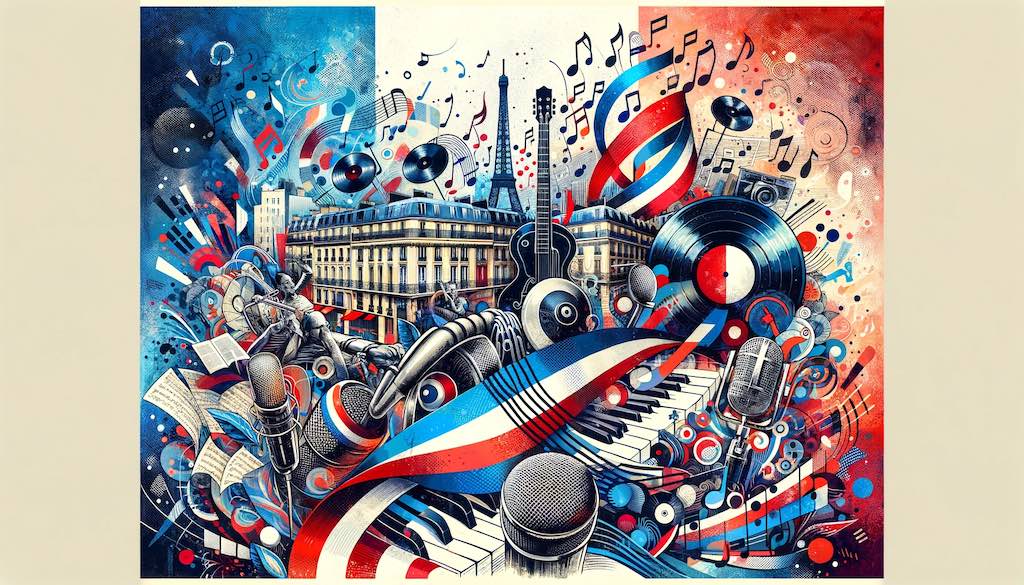
The Melodic Journey of French Music: From Ancient Roots to Global Influence
French music’s journey spans centuries, tracing its origins to ancient Celtic, Roman, and medieval influences, and evolving into a vibrant blend of traditional and contemporary styles.
Traditional genres like chanson, opera, and folk music are cornerstones of France’s musical identity, marked by poetic lyricism and emotive storytelling. These styles have significantly shaped the nation’s musical heritage.
Historically, France has been a cradle of musical innovation. Legendary composers like Claude Debussy and Maurice Ravel transformed classical music, while contemporary artists such as Daft Punk and David Guetta have continued this legacy, pushing the boundaries of music.
In the realm of contemporary music, French pop, electronic, and world music have gained international acclaim. Artists like Stromae, Christine and the Queens, and Zaz have captivated global audiences with their distinctive sounds and dynamic performances.
The global impact of French music is profound, influencing various genres and cultures. The French Touch movement in electronic music and the worldwide appeal of French pop songs are testament to this influence.
Regional music variations add to France’s rich musical tapestry. Each area, from Brittany’s lively folk melodies to Corsica’s melancholic ballads, contributes its unique sound and tradition.
France celebrates its musical heritage with numerous festivals and events. The Fête de la Musique, Les Francofolies, and the Festival d’Avignon, among others, bring music to life, showcasing a wide array of talent and underscoring the country’s enduring love for music.
French music is a diverse and dynamic art form, spanning a spectrum of genres and styles. With deep historical roots and a broad global influence, it continues to enchant audiences worldwide. French music, in all its forms, remains a vital and inspiring element of the global music landscape, resonating across generations.
The Historical Significance of French Music on World Music
French music has played a significant role in shaping the landscape of world music. With its rich cultural heritage and multifaceted influences, French music has captivated audiences worldwide for centuries. From the classical compositions of iconic composers to the infectious rhythms of modern genres, the influence of French music can be heard across various musical styles and traditions.
One of the most notable contributions of French music to the world is in the realm of classical music. France boasts a long and prestigious history of classical composers who have left an indelible mark on the genre. From luminaries like Claude Debussy and Maurice Ravel to influential Baroque composers such as Jean-Baptiste Lully and François Couperin, French classical music has set the benchmark for elegance, sophistication, and innovation.
The influence of French classical music extends far beyond the borders of France. Composers and musicians from all over the world have been inspired by the works of French masters, incorporating elements of their style into their own compositions. The ethereal melodies and impressionistic harmonies of Debussy, for instance, have had a profound impact on composers from a variety of genres, including film music and contemporary classical music.
In addition to classical music, French chanson has also made its mark on the global music scene. Chanson refers to a French song style that emerged during the Middle Ages and has evolved over time. With its poetic lyrics and emotive melodies, chanson has become synonymous with French music. Artists like Edith Piaf, Jacques Brel, and Charles Aznavour have popularized the genre internationally, infusing it with their own unique interpretations and making it accessible to a global audience.
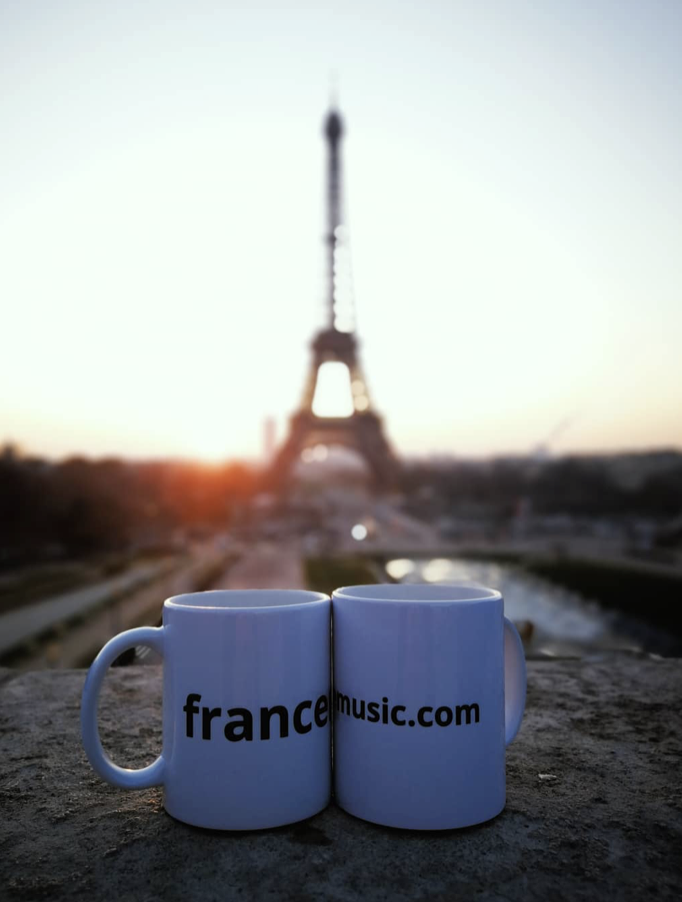
The influence of French chanson can be heard in various genres of world music. For instance, the Latin American music scene has incorporated elements of French chanson into their own traditional music, resulting in a fusion of cultural influences. Similarly, artists from other European countries have drawn inspiration from French chanson, blending it with their own musical traditions to create a distinct hybrid sound.
French jazz is another genre that has left a lasting impression on world music. The influence of French jazz can be traced back to the 1920s when American jazz musicians, such as Sidney Bechet and Josephine Baker, found a welcoming audience in France. This led to a vibrant jazz scene in Paris, with French musicians embracing the genre and adding their unique flair to it. Today, French jazz continues to thrive and has gained international acclaim, with artists like Django Reinhardt and Stéphane Grappelli becoming legendary figures in the genre.
The impact of French jazz on world music cannot be overstated. It has influenced the development of jazz in various regions, including Africa, the Caribbean, and even the United States. Jazz artists from around the world have borrowed from the French jazz tradition, incorporating its melodic sensibilities and improvisational techniques into their own compositions.
French music has had a profound impact on world music. Whether through classical compositions, chanson, or jazz, French musicians and composers have left an indelible mark on the global musical landscape. Their influence can be heard in various genres and traditions, making French music an essential part of the global cultural tapestry.
The Influence of French Classical Music on World Music
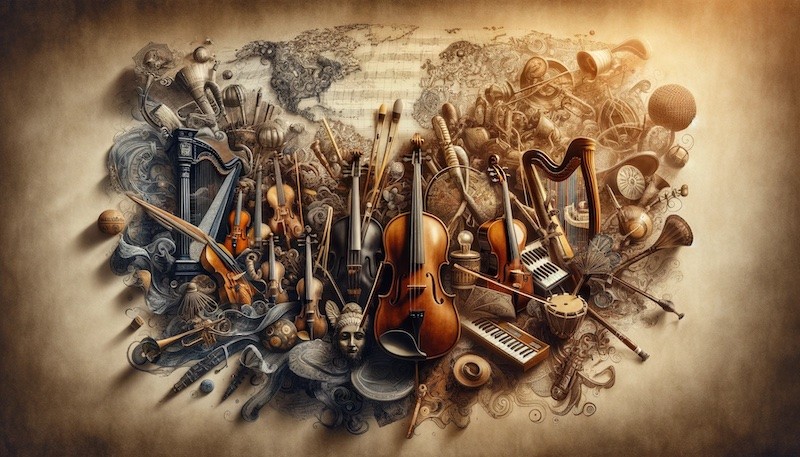
French classical music has left an indelible mark on the global music landscape, influencing composers and musicians across diverse genres and continents. From the Baroque era to the present day, French composers have played a pivotal role in shaping the evolution of classical music, ballet, and film scores, while fostering cross-cultural collaborations that continue to enrich the world of music.
The Baroque era witnessed the emergence of French musical luminaries like Jean-Baptiste Lully and François Couperin. Lully’s groundbreaking use of the French overture and his establishment of French opera left an enduring imprint on European composers, setting a new standard for grandeur, elegance, and intricate ornamentation.
The Romantic era saw the rise of Hector Berlioz and Claude Debussy, who boldly challenged the boundaries of classical music with their innovative harmonies and unconventional forms. Berlioz’s symphonic works, epitomized by his renowned “Symphonie fantastique,” showcased his daring approach to orchestration, while Debussy’s impressionistic masterpieces, such as “Clair de Lune” and “Prelude to the Afternoon of a Faun,” captivated audiences with their ethereal and evocative soundscapes.
French classical music also played a crucial role in the development of ballet, with composers like Charles Gounod, Camille Saint-Saëns, and Maurice Ravel creating iconic ballet scores that became synonymous with the art form. Ravel’s “Boléro” and Saint-Saëns’ “Danse Macabre” continue to be performed and revered by ballet companies worldwide.
Beyond the confines of classical music, French composers have also made significant contributions to other genres, particularly in the world of film music. Georges Delerue, a renowned composer and conductor, left a lasting legacy on film scoring, collaborating with directors François Truffaut and Jean-Luc Godard to shape the cinematic sound of the French New Wave. His influence extended to composers like Michel Legrand and Alexandre Desplat, who continue to carry the torch of French cinematic music.
French classical music has also transcended cultural barriers, inspiring musicians from diverse backgrounds to explore and incorporate its rich tapestry into their own creative expressions. Renowned cellist Yo-Yo Ma, for instance, has seamlessly integrated French classical compositions into his repertoire, bridging the gap between classical traditions and contemporary interpretations.
French chanson has a long and rich history, evolving over centuries into a unique genre that has made a significant impact on world music
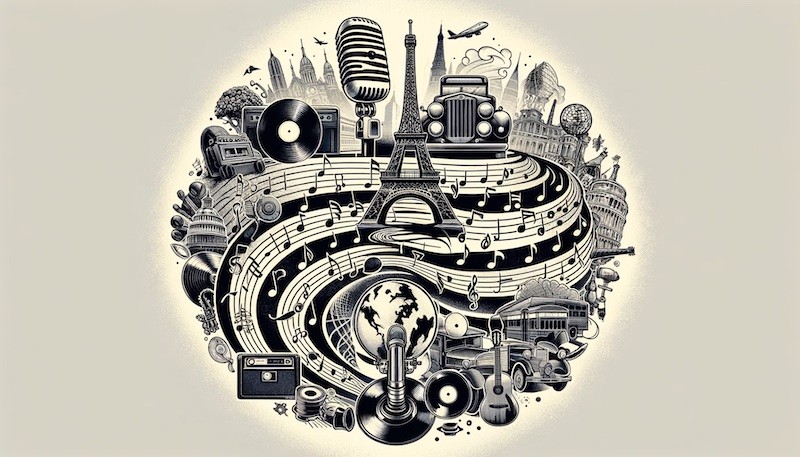
Originating in medieval times, chanson was initially a poetic form of songwriting that emphasized storytelling and emotional depth. As the years went by, chanson evolved, incorporating various musical styles and influences to become a genre that is appreciated and recognized worldwide.
Medieval French chanson: During the Middle Ages, French chanson was predominantly written and performed by troubadours and trouveres, who traveled across Europe, spreading their musical tales. Their compositions were greatly influenced by the Trouveres traditions of Northern France and the Troubadours traditions from the South. Their songs reflected topics such as courtly love, heroic deeds, and political commentaries, making chanson a vital vehicle for storytelling and social commentary.
Renaissance French chanson: In the Renaissance period, French chanson experienced a major transformation. The influence of composers like Guillaume Dufay and Josquin des Prez led to the development of polyphonic chanson. Polyphony, the art of combining multiple independent melody lines, introduced a new complexity and sophistication to French chanson, which resonated with audiences across Europe. The popularity of polyphonic chanson highlighted the immense talent and creativity of French composers during this era.
20th-century French chanson: Moving into the 20th century, French chanson experienced yet another evolution. The rise of recording technology and the growth of the entertainment industry allowed chanson to reach a wider audience. Artists such as Edith Piaf and Charles Trenet became iconic figures in French music, captivating listeners with their passionate performances and emotional lyrics. Their music often reflected the sentiments and experiences of the French people during times of war and social change.
Influence on Latin American music: French chanson has also had a profound influence on various genres of world music. One notable example is the influence of chanson on Latin American music, particularly in countries like Argentina and Chile. Artists like Violeta Parra and Mercedes Sosa drew inspiration from the storytelling aspect of chanson, incorporating it into their own music and contributing to the development of nueva canción, a genre that combines folk and political commentary.
Influence on American folk music: In addition to Latin America, French chanson has also played a role in the evolution of American folk music. Artists such as Joan Baez and Bob Dylan have cited French chanson as an inspiration for their songwriting and storytelling styles. The introspective and poetic nature of chanson has had a lasting impact on American folk music, creating a connection between the two genres that continues to be recognized today.
The evolution of French chanson has had a significant influence on world music. From its roots in medieval troubadour traditions to its impact on Latin American and American folk music, chanson has captivated audiences with its storytelling and emotional depth. French chanson continues to be celebrated and appreciated worldwide, highlighting its enduring place in the tapestry of global music.
The Influence of French Music on World Music
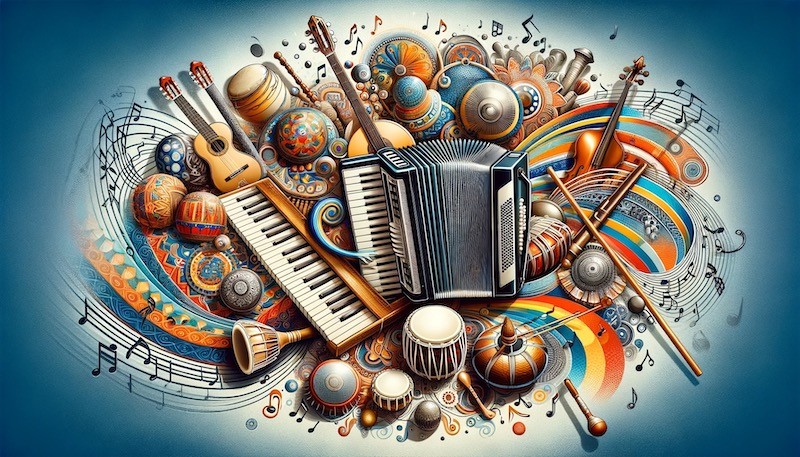
French music has played a significant role in shaping and influencing world music, particularly in the realm of jazz. Jazz, which originated in the United States, found a unique connection with French musicians and audiences, leading to a fruitful exchange of musical ideas and styles. This cultural intermingling has not only enriched the jazz scene in both countries but has also influenced artists globally.
One of the key figures who bridged the gap between American jazz and French music was the legendary jazz guitarist, Django Reinhardt. Reinhardt, of Romani descent, is considered one of the greatest guitarists of all time and a pioneer of Gypsy jazz. His virtuosic guitar playing and unique blend of American jazz, French musette, and Romani music captivated audiences around the world. Reinhardt’s collaborations with American jazz musicians such as Duke Ellington and Benny Carter helped popularize his style and gave birth to the influential genre known as “gypsy jazz.”
French musicians also embraced the improvisational nature of jazz and incorporated it into their own music. The “Manouche” style, inspired by Reinhardt, became an essential part of the French music scene. French jazz musicians, such as violinist Stéphane Grappelli and saxophonist Barney Wilen, played a vital role in furthering the reputation of French jazz on the international stage.
Beyond jazz, French music has also made significant contributions to world music through its classical tradition. French composers, such as Claude Debussy and Maurice Ravel, revolutionized classical music with their innovative harmonies and impressionistic compositions. Their works, such as Debussy’s “Clair de Lune” and Ravel’s “Boléro,” continue to be celebrated and performed by musicians worldwide.
French chanson, a genre that emerged in the early 20th century, also left a lasting impact on world music. Artists like Édith Piaf and Charles Aznavour became international icons, their heartfelt performances and evocative lyrics resonating with audiences globally. The influence of French chanson can be seen in the works of artists such as Leonard Cohen, Tom Waits, and even contemporary pop musicians.
Besides these individual contributions, French music festivals have played a crucial role in spreading French musical culture worldwide. Festivals like the Montreux Jazz Festival and the Festival d’Avignon attract artists and music enthusiasts from around the globe, providing a platform for both local and international musicians to showcase their talent. These festivals foster cultural exchange, enabling artists to connect and draw inspiration from various musical traditions.
French music has had a profound influence on world music, particularly through its contributions to jazz, classical music, chanson, and music festivals. The cultural exchange between French and international musicians has enriched the global music scene, creating a diverse and dynamic musical landscape for audiences worldwide to enjoy.
The Influence of French Music Festivals on World Music

French music has significantly impacted world music, particularly in jazz. Originating in the United States, jazz resonated with French musicians and audiences, leading to a dynamic exchange of musical styles. This cross-cultural interaction has enhanced the jazz scenes in both countries and globally.
Django Reinhardt, a Romani jazz guitarist, stands as a pivotal figure in merging American jazz with French music. Renowned as one of history’s finest guitarists, Reinhardt pioneered Gypsy jazz, fusing American jazz, French musette, and Romani sounds. His collaborations with American jazz icons like Duke Ellington and Benny Carter popularized this genre and birthed “gypsy jazz.”
French musicians have also adapted jazz’s improvisational essence, notably in the “Manouche” style, influenced by Reinhardt. French jazz artists such as violinist Stéphane Grappelli and saxophonist Barney Wilen significantly contributed to French jazz’s international prestige.
In the classical realm, French composers like Claude Debussy and Maurice Ravel brought innovative harmonies and impressionistic elements to classical music. Their compositions, including Debussy’s “Clair de Lune” and Ravel’s “Boléro,” are globally celebrated.
The early 20th-century French chanson genre also left an indelible mark on world music. Artists like Édith Piaf and Charles Aznavour, known for their emotive performances and poignant lyrics, gained international fame. The influence of French chanson extends to various artists, including Leonard Cohen and Tom Waits, and continues in contemporary pop music.
Moreover, French music festivals, such as the Montreux Jazz Festival and the Festival d’Avignon, have been instrumental in promoting French musical culture globally. These events draw artists and enthusiasts worldwide, fostering cultural exchanges and inspiring diverse musical traditions.
French music’s influence on jazz, classical music, chanson, and music festivals has profoundly shaped the global music landscape. The interaction between French and international musicians has created a rich, varied musical environment for audiences everywhere.
Here are some other interesting facts about French music:
- France has the second largest music industry in the world, after the United States.
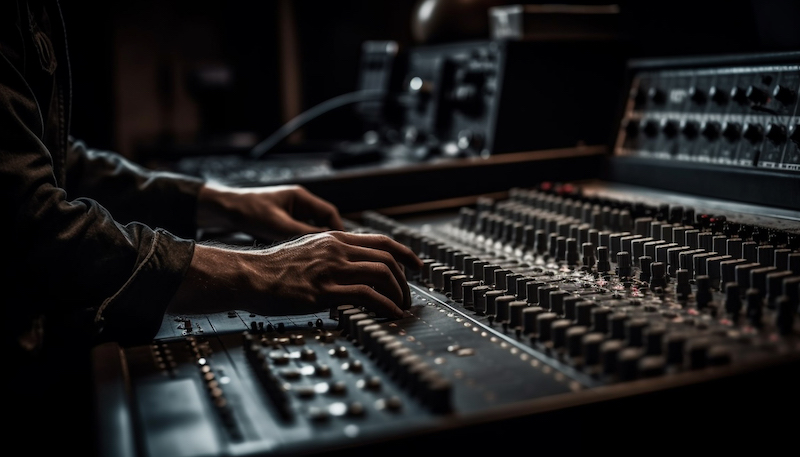
- France is home to the Paris Opera, one of the most famous opera houses in the world.
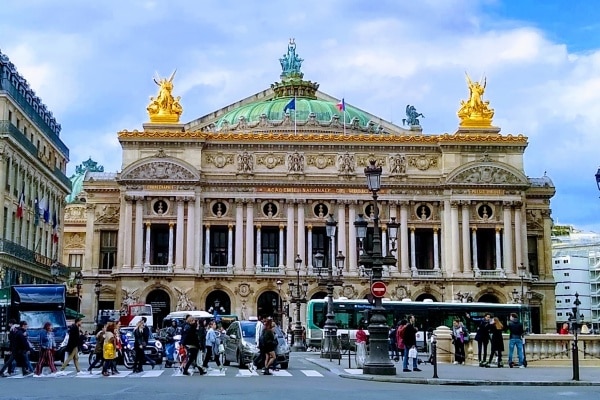
- France is home to the Cannes Film Festival, one of the most important film festivals in the world.

- France is home to the Montreux Jazz Festival, one of the most important jazz festivals in the world.
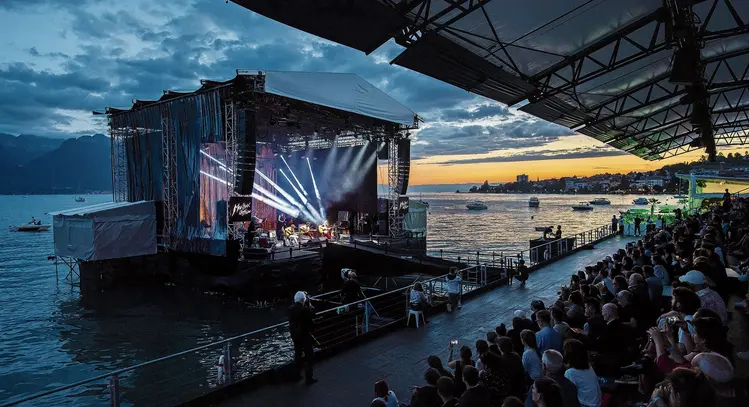
Some very well known Tunes
- “La Marseillaise” – The French National Anthem
- “Claire de Lune” – Claude Debussy
- “Boléro” – Maurice Ravel
- “The Rite of Spring” – Igor Stravinsky
- “I’ve Got Rhythm” – George Gershwin
- “Charleston” – The Original Dixieland Jass Band
- “La Vie en Rose” – Edith Piaf
- “Non, Je Ne Regrette Rien” – Edith Piaf
- “L’Amour Est Bleu” – Jeanette Biedermann
- “Amelie” – Yann Tiersen
The impact of French music on the global musical scene is profound and varied, encompassing the depths of classical compositions, the soulful essence of chansons, and the dynamic spirit of jazz. This rich tapestry of French sounds has captivated international audiences, leaving a lasting imprint on the musical world. The symbiotic relationship between French and world music has fostered a creative exchange, enhancing the evolution of diverse musical styles.
Jean-Baptiste Lully, Claude Debussy, and Maurice Ravel stand out in the realm of French classical music, their works transcending boundaries and enchanting listeners globally. They have set the standard for musical excellence, influencing a range of genres from orchestral pieces to film scores. The depth and sophistication of French classical music have had a lasting influence on the international music scene, shaping its very fabric.
The evolution of French chanson is also noteworthy in its global impact. Originating in the Middle Ages, chansons have melded poetic lyrics with captivating melodies. Artists like Edith Piaf and Jacques Brel have given this genre a global voice, their emotive storytelling and stirring melodies inspiring artists worldwide. The legacy of French chanson is evident in its influence on diverse musical cultures, leading to the creation of chanson-inspired songs in various languages.
Jazz, a significant French musical contribution, gained a unique character in France. The early 20th century saw American jazz artists drawing inspiration from Paris’s vibrant atmosphere. This resulted in a fusion of traditional American jazz with a distinctive French touch. Jazz icons like Django Reinhardt and Sidney Bechet, through their groundbreaking work, have played a crucial role in transforming jazz into an international phenomenon.
Furthermore, French music festivals have been instrumental in disseminating French musical culture globally. The Montreux Jazz Festival and Printemps de Bourges, for example, showcase French talent while attracting international audiences. These festivals encourage cross-cultural collaborations, inspiring musicians to blend French elements into their work, thus broadening the reach of French music.
In summary, the global influence of French music is vast and impactful. The historical significance of French classical music, the enchanting charm of chanson, the mutual enrichment between French and international jazz, and the worldwide influence of French music festivals have collectively shaped today’s diverse musical landscape. The ongoing resonance of French music across borders continues to inspire musicians and captivate audiences, reinforcing its timeless appeal in the world of music.




